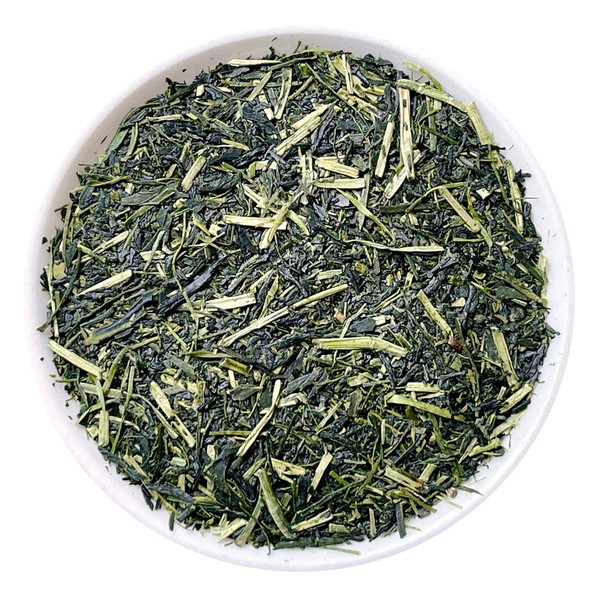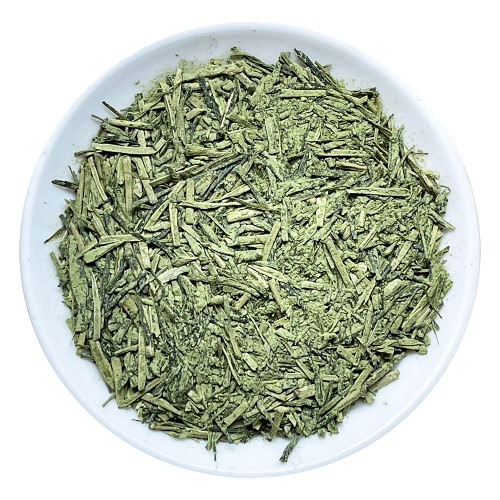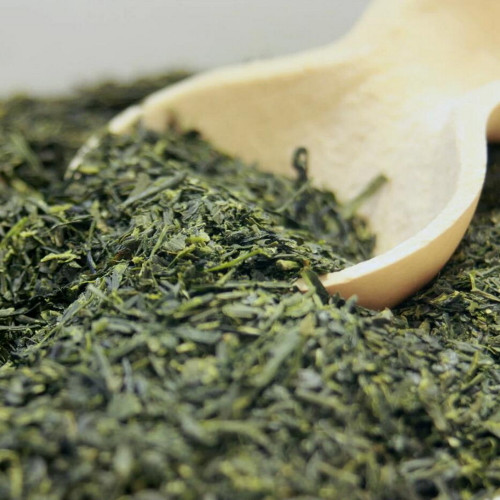Product Overview
Kukicha is also called Karigane and is produced using Gyokuro instead of Sencha. Karigane (literally "the cry of the wild goose") is the leaf stalks of shaded Gyokuro material. This Karigane has a special umami flavor that balances the green, vegetal flavor you love in a Kukicha.
Usually, Kukicha is made from the stems and veins of Sencha. However, high-quality Kukicha is also made from the stems of precious Gyokuro green tea and is called "Karigane". Our Gyokuro Kukicha Green Tea is made from the stems of the only highest quality Gyokuro green tea leaves, which have been shaded in a traditional method for 30 days before harvest. As the stems only account for approximately 5 to 10% of the harvested Gyokuro tea leaves, there is a tiny amount of production of Gyokuro Karigane each year and top quality Gyokuro Karigane is very rare and highly appreciated by Gyokuro connoisseurs in Japan.
Our Kukicha is made largely from stems and leaves of organically grown Gyokuro teas. It has a mellow flavor with a refreshing aftertaste. Since Kukicha has a high content of stems it has less caffeine than regular green tea. This is a very good introductory tea to the Japanese green tea category.
It has rich crustacean notes accompanied with cooked vegetal, herbaceous notes. This is kukicha of gyokuro. Stems have less astringent catechin. Plus, this is a stem tea of shade-grown trees. And stems have more umami than It is smooth, well-rounded, full-bodied liquor. Due to the low leaf content, the tea contains relatively little caffeine and bitterness. Velvety mouthfeel and fresh, minty finish that leads to a cooling sensation on the palate.
Brewing Guide: you can cold brew Gyokuro with ice. It's a rather long process but fail-free and an incredibly refreshing way to enjoy the beverage. Add 90 to 150g of pure ice into a teapot with 8 to 10g of Gyokuro in it, let it rest overnight in your fridge. You can also let the ice melt at room temperature, it will be faster, but it will still need a couple of hours.

















